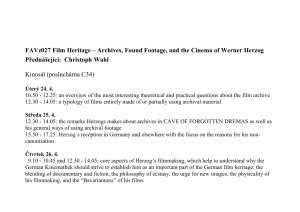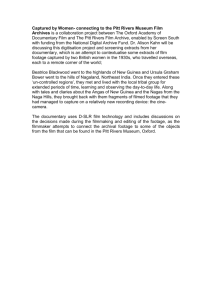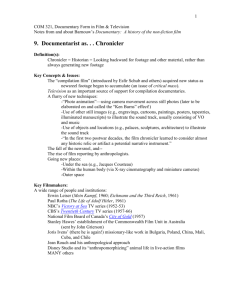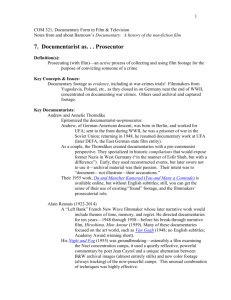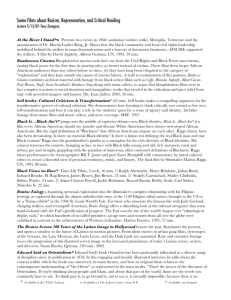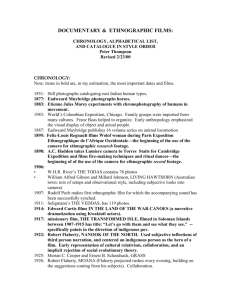synopsis
advertisement
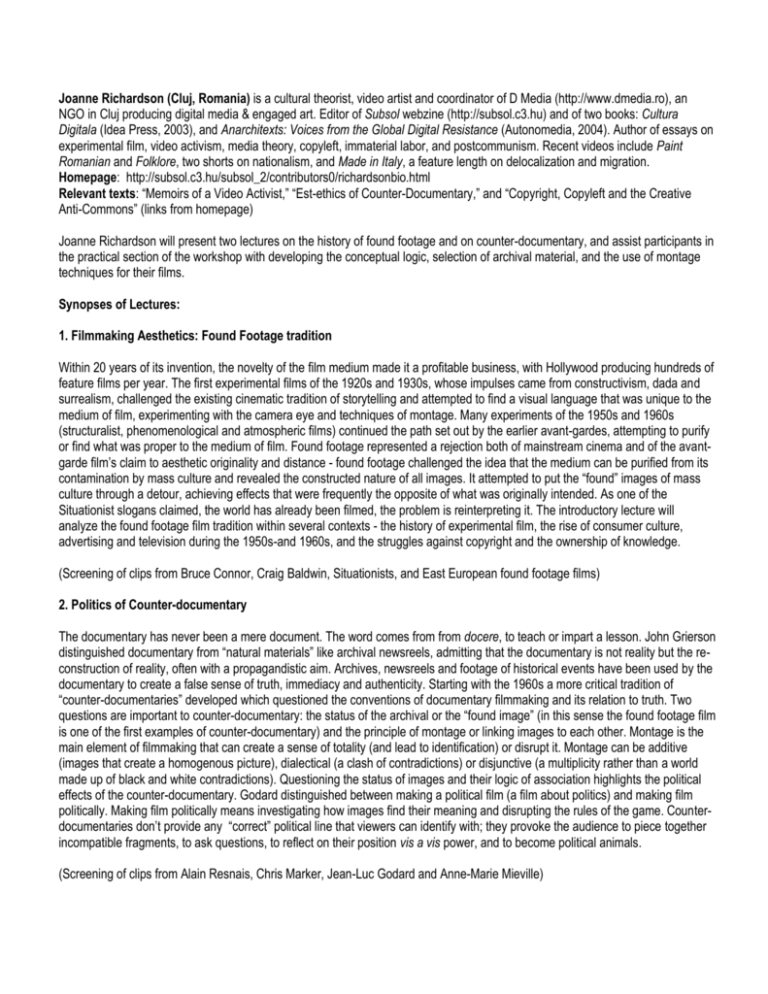
Joanne Richardson (Cluj, Romania) is a cultural theorist, video artist and coordinator of D Media (http://www.dmedia.ro), an NGO in Cluj producing digital media & engaged art. Editor of Subsol webzine (http://subsol.c3.hu) and of two books: Cultura Digitala (Idea Press, 2003), and Anarchitexts: Voices from the Global Digital Resistance (Autonomedia, 2004). Author of essays on experimental film, video activism, media theory, copyleft, immaterial labor, and postcommunism. Recent videos include Paint Romanian and Folklore, two shorts on nationalism, and Made in Italy, a feature length on delocalization and migration. Homepage: http://subsol.c3.hu/subsol_2/contributors0/richardsonbio.html Relevant texts: “Memoirs of a Video Activist,” “Est-ethics of Counter-Documentary,” and “Copyright, Copyleft and the Creative Anti-Commons” (links from homepage) Joanne Richardson will present two lectures on the history of found footage and on counter-documentary, and assist participants in the practical section of the workshop with developing the conceptual logic, selection of archival material, and the use of montage techniques for their films. Synopses of Lectures: 1. Filmmaking Aesthetics: Found Footage tradition Within 20 years of its invention, the novelty of the film medium made it a profitable business, with Hollywood producing hundreds of feature films per year. The first experimental films of the 1920s and 1930s, whose impulses came from constructivism, dada and surrealism, challenged the existing cinematic tradition of storytelling and attempted to find a visual language that was unique to the medium of film, experimenting with the camera eye and techniques of montage. Many experiments of the 1950s and 1960s (structuralist, phenomenological and atmospheric films) continued the path set out by the earlier avant-gardes, attempting to purify or find what was proper to the medium of film. Found footage represented a rejection both of mainstream cinema and of the avantgarde film’s claim to aesthetic originality and distance - found footage challenged the idea that the medium can be purified from its contamination by mass culture and revealed the constructed nature of all images. It attempted to put the “found” images of mass culture through a detour, achieving effects that were frequently the opposite of what was originally intended. As one of the Situationist slogans claimed, the world has already been filmed, the problem is reinterpreting it. The introductory lecture will analyze the found footage film tradition within several contexts - the history of experimental film, the rise of consumer culture, advertising and television during the 1950s-and 1960s, and the struggles against copyright and the ownership of knowledge. (Screening of clips from Bruce Connor, Craig Baldwin, Situationists, and East European found footage films) 2. Politics of Counter-documentary The documentary has never been a mere document. The word comes from from docere, to teach or impart a lesson. John Grierson distinguished documentary from “natural materials” like archival newsreels, admitting that the documentary is not reality but the reconstruction of reality, often with a propagandistic aim. Archives, newsreels and footage of historical events have been used by the documentary to create a false sense of truth, immediacy and authenticity. Starting with the 1960s a more critical tradition of “counter-documentaries” developed which questioned the conventions of documentary filmmaking and its relation to truth. Two questions are important to counter-documentary: the status of the archival or the “found image” (in this sense the found footage film is one of the first examples of counter-documentary) and the principle of montage or linking images to each other. Montage is the main element of filmmaking that can create a sense of totality (and lead to identification) or disrupt it. Montage can be additive (images that create a homogenous picture), dialectical (a clash of contradictions) or disjunctive (a multiplicity rather than a world made up of black and white contradictions). Questioning the status of images and their logic of association highlights the political effects of the counter-documentary. Godard distinguished between making a political film (a film about politics) and making film politically. Making film politically means investigating how images find their meaning and disrupting the rules of the game. Counterdocumentaries don’t provide any “correct” political line that viewers can identify with; they provoke the audience to piece together incompatible fragments, to ask questions, to reflect on their position vis a vis power, and to become political animals. (Screening of clips from Alain Resnais, Chris Marker, Jean-Luc Godard and Anne-Marie Mieville)
